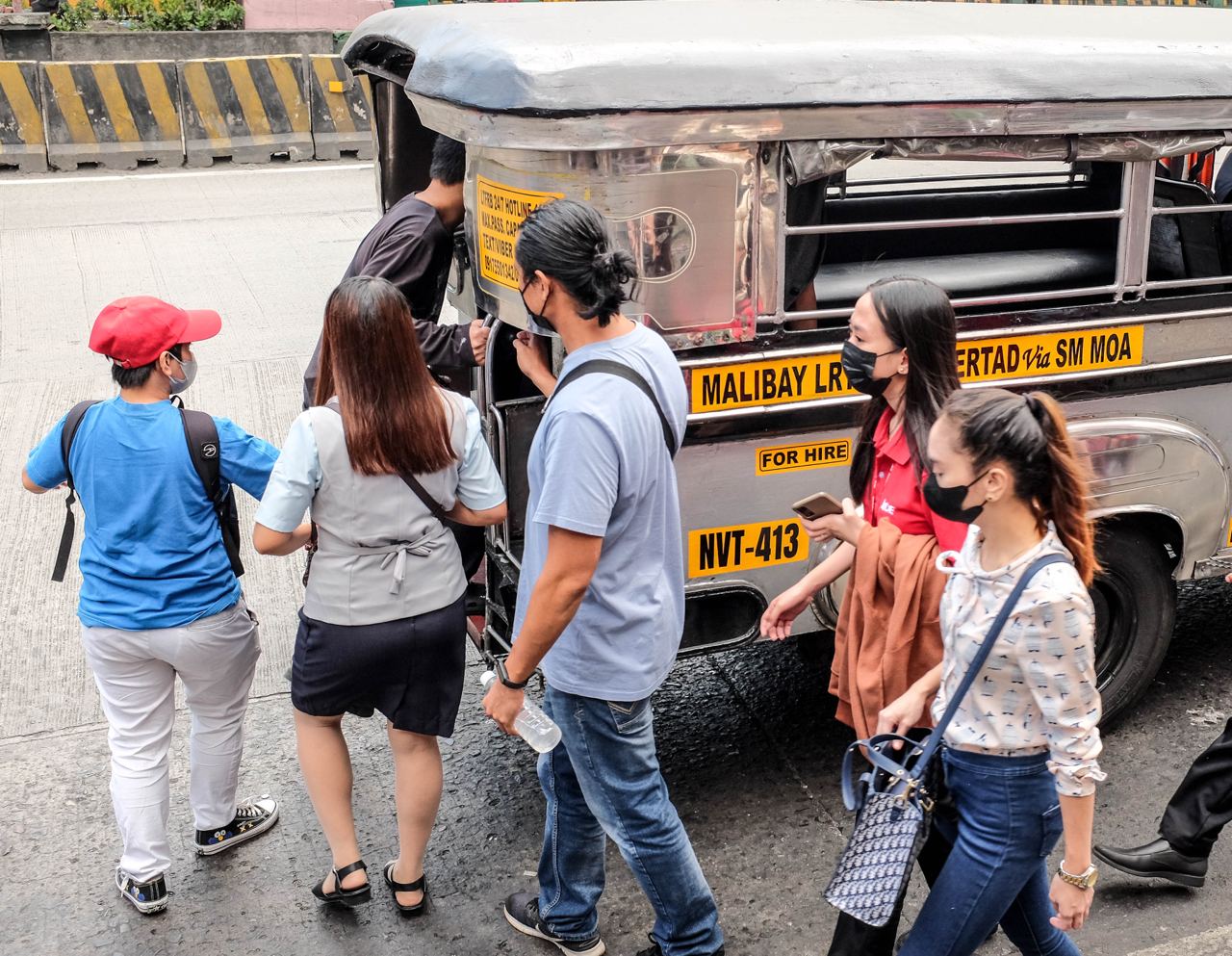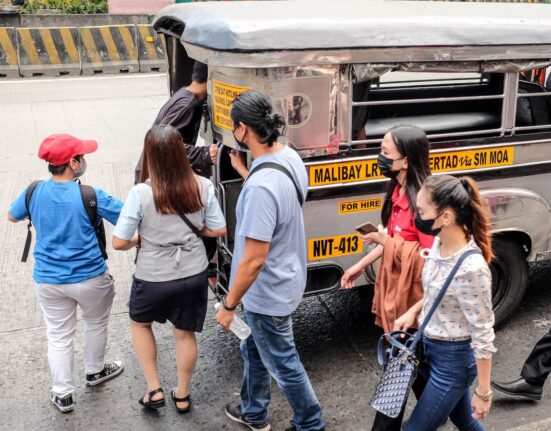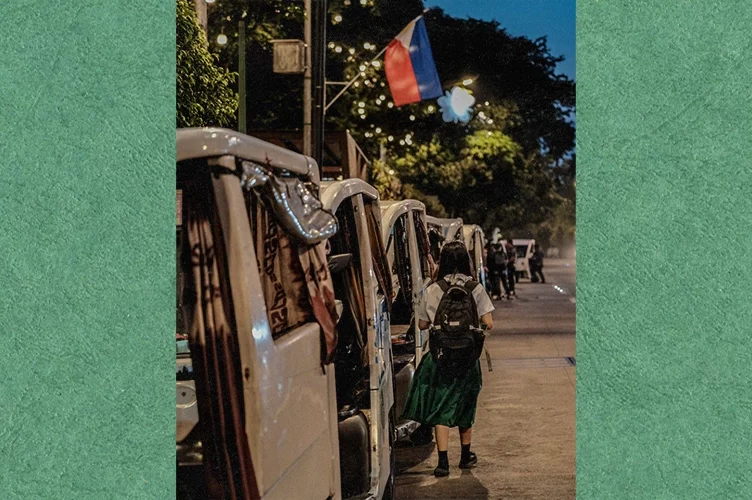STUDENTS in Metro Manila, like me, are plagued with commuter problems that hound Filipinos every day.
The unpredictable volume of vehicles roaring left and right? Pricey commuter fare? Long queues at bus and jeepney stops? Trains that break down now and then? The never-ending shortage of public utility vehicles?
Name it, we know it. Because we go through the ordeal, too.
Frankly speaking, the school I go to is just a jeepney ride and a short walk away from where I live.
I consider the house-to-school proximity a privilege that most commuters do not have. In fact, my travel time is dramatically shorter compared to the students I interviewed for this story. But I still struggle to get out of bed every morning because of how hellish public transportation is.

Have I mentioned that the minimum fare is too steep? If I already had, then pardon my redundancy. I will blurt that twice so the point sinks in.
As far as the depth of my pocket is concerned, it will always be the jeep and walk combo for me. Nothing else. My current budget as a working student is just enough for me to get by. I cannot afford to ride an air-conditioned commuter van even if I want to reach school looking fresh and tidy.
A tricycle ride costs around P80. Grab charges a fortune.
So, it leaves me with no choice but to walk and hail a jeep, and walking around Manila is not easy.
The streets and alleys barely have trees and the sweltering heat makes you feel like you’ve just lathered up your skin with hot cooking oil. Worse, you’ll encounter catcallers who feel entitled to see your smile.
The jeep-and-walk combo is as terrible, or probably worse, during the afternoon rush hour. But the route I dread is the same one I have take on my way home after class.
Time spent queueing along jeepney stops is always wasted time. To add insult to injury, there is no guarantee that your ride would arrive. Sometimes, when it does, the PUV is filled to the brim.
Commuting in the Philippines is a different monster and I don’t know how to tame it.

Recently, the government allowed jeep drivers to jack up their prices. So even my go-to ride has now become expensive, too.
It was as if someone has struck the last nail to seal the coffin. While P10 does not seem big for others, to me, that amount decides whether I will be walking or riding home.
When I first started commuting, the minimum jeepney fare was just P8. With P10 as the minimum fare, I now live with the constant worry that I could run out of money.
You feel it too, right?
Since the public transportation system is a mess, some people, like Asian studies student Zia Ramirez, are forced to leave their homes before sunrise to avoid getting stuck in traffic. “I think it’s getting worse when I see the news,” said Ramirez, a resident of Bacoor, Cavite.
She leaves home at 5 a.m. so she has enough time to down a quick breakfast before her classes at the University of Santo Tomas start at 7 a.m.
SUGGESTED STORIES:
On-site classes, suspendido muli sa Abril 29-30 dahil sa init, transport strike
HINDI muna papasok sa eskwelahan ang mga estudyante sa lahat.
Child porn sites increasing, says Globe
Globe expressed alarm over the sharp rise in detected child.
How G22’s ‘One Sided Love’ lead them to become P-pop’s ‘Female Alphas?’
IN FEBRUARY 2022, the P-pop industry welcomed a set of.
Ramirez spends P236 on fare alone. That amount is about half of the required minimum wage in Metro Manila.
“I feel so bad for everyone. It’s gotten harder because gas is expensive now, which makes fares expensive as well. Sobrang sakit sa bulsa. Before the pandemic, UV lagi kong sinasakyan kasi 50 pesos lang, at mas mabilis pa. But now I get dizzy just thinking na I need to pay 80 pesos. 100 nga siya pag hindi ka student eh. Nakakaloka.”
Dyan Simplicio from Makati describes her commute to UST as exhausting. “I feel really tired, and usually my body aches, because I have to switch modes of transportation,” she said, adding she spends P79 for the fare.
The distance between Simplicio’s house and the university is roughly five kilometers. But she still leaves the house two to three hours in advance to “have the chance to catch the LRT or UV or jeep.”
Whenever faced with the same ordeal, Jeanette Tolosa of the Ateneo de Manila University company fill her head with a never-ending thought of “gusto ko nang umuwi.”
Her house is located on the border of south Caloocan and Quezon City but Tolosa leaves two hours before her first class starts.
“The problem I most often face is the rush hour,” she said. “Commuting has gotten harder over these years. There’s no room for enjoyment anymore as train conditions worsen: the aircon inside is not functioning, shortage of beep cards, and to top it off, the climate change we’re currently experiencing. These all take a toll on a commuter’s well-being.”
‘Dehumanizing‘
The problem with the substandard public transportation system is a recurring issue in the Philippines. Administrations come and go, yet one seems to have the solution to these woes.
As Ramirez puts it, “It’s dehumanizing to commute in Metro Manila.”
If anyone tells you that they are trying their best to solve the problem. The apt response would have to be, I guess, is try harder.
Dealing with traffic often leads to exhaustion, lowered productivity, and–most prominent of all in the COVID-19 era–health risks, said Bernadeth Polintan of Crown Asia.
As prices continue to increase but transportation systems stay unimproved, it’s hard not to feel as if you’ve been cheated.
Here are some tips that can help ease your burden:
- Plan and budget your money
“Let people know where you are [and] bring water and a power bank because traffic can be very unpredictable,” says Chia Basan, a second-year student from MINT College.
To find the most convenient routes to take from Paranaque to Pasig, Simplicio relies on Sakay.ph.
“Budget your money ahead of time so you won’t have to count while commuting, you just have to give it,” said Simplicio. “And prepare [the] exact amount, especially if commuting at night. And bring extra money with you so you can use it if there is an emergency or something.”
- Prepare yourself mentally and physically
“Mentally prepare yourself for all the exhaustion you’d face while commuting,” Tolosa said. “It’s okay to focus on resting once you get home. No need to force yourself to be productive.”
- Ask the government to do better
“I think the only suggestion I can give logically is for the government to have a more commuter-friendly operation of PUVs they regulate,” Simplicio suggested. “For example, LRTs and MRTs only operate until 9 p.m. or 10 p.m., but some people work until 11 p.m., so they’re left with no choice but to use the PUVs below.”
“In the near future, I would like to see more PUVs on the roads, with more routes and more schedules,” Basan also suggested. “This would make it more convenient for commuters, shorten the wait times, and hopefully encourage more people to commute.”
Ramirez couldn’t have said it better when she offered the solution: “More buses and trains and jeepneys, fewer cars.”












